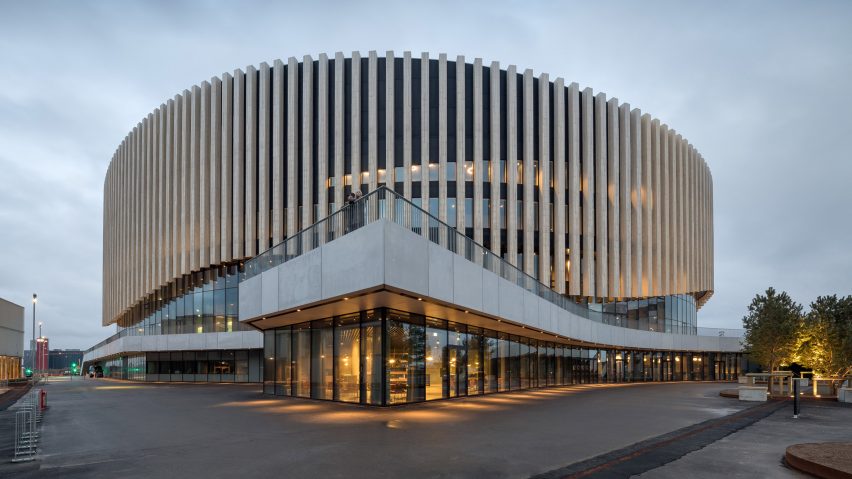
Copenhagen arena by 3XN has an undulating wooden facade that rises up above entrances
Danish firm 3XN has completed a large sporting and cultural arena in Copenhagen, featuring a glazed curtain wall wrapped in timber fins arranged to allow partial views of the interior.
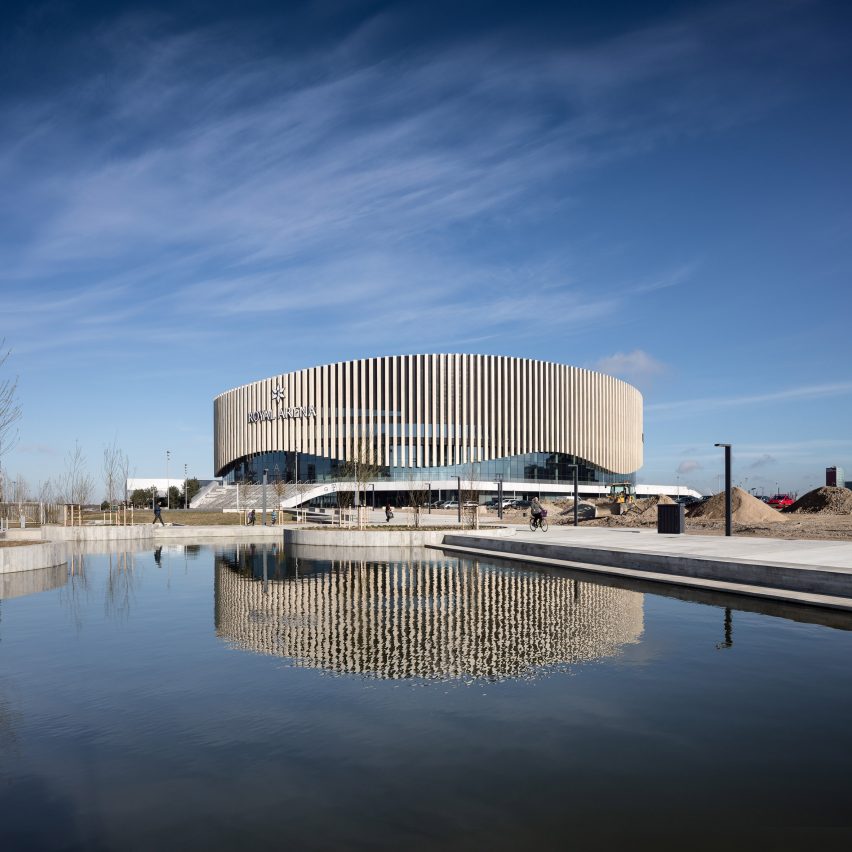
The 35,000-square-metre Royal Arena is situated in the Danish capital's residential Ørestad Syd area and was designed by 3XN together with global architecture firm HKS to host concerts and international sporting events.
Its location in a densely urban area prompted the project team to focus on ensuring that the venue contributes to the local community by encouraging public engagement with its spaces and facilities.
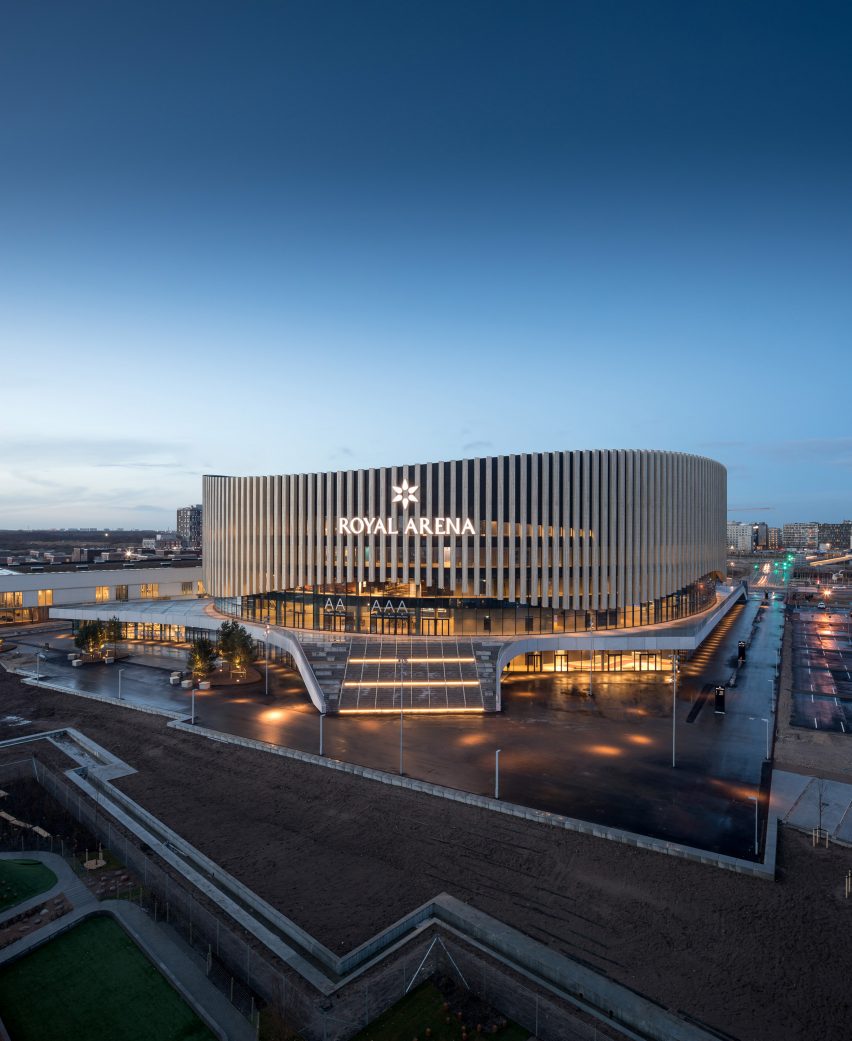
"Our most important question before starting the Royal Arena project was, How do we design the good neighbour for this area?” said 3XN founder and creative director, Kim Herfort Nielsen.
The flexible multipurpose arena features a podium that acts as a link between the building and its surroundings by introducing various plazas and areas for socialising around its perimeter.
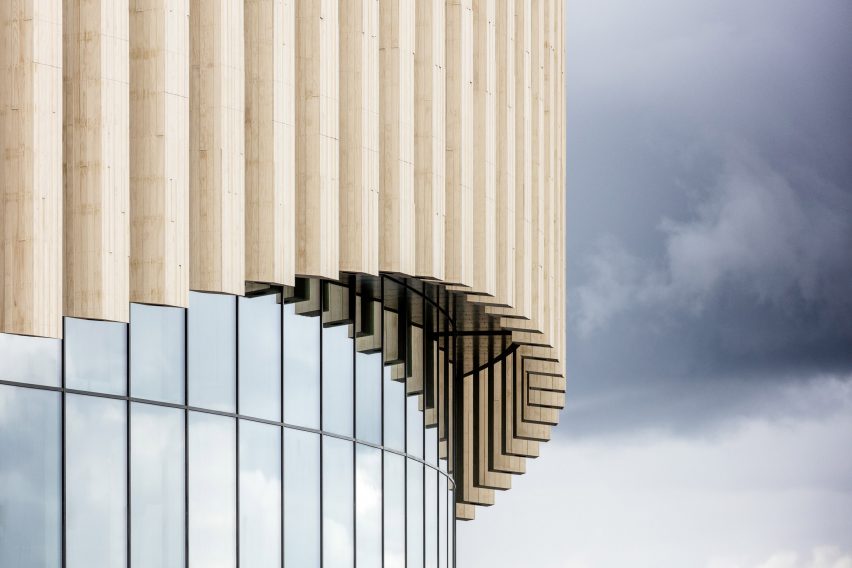
People living and working in the neighbourhood are encouraged to use these public spaces, as well as the wide entrance staircase and surrounding plaza, when the building is not in use.
The arena's exterior design is also intended to present a more transparent and welcoming presence than typical stadiums, with the glazed surfaces and slatted timber sheath allowing views inwards and outwards.
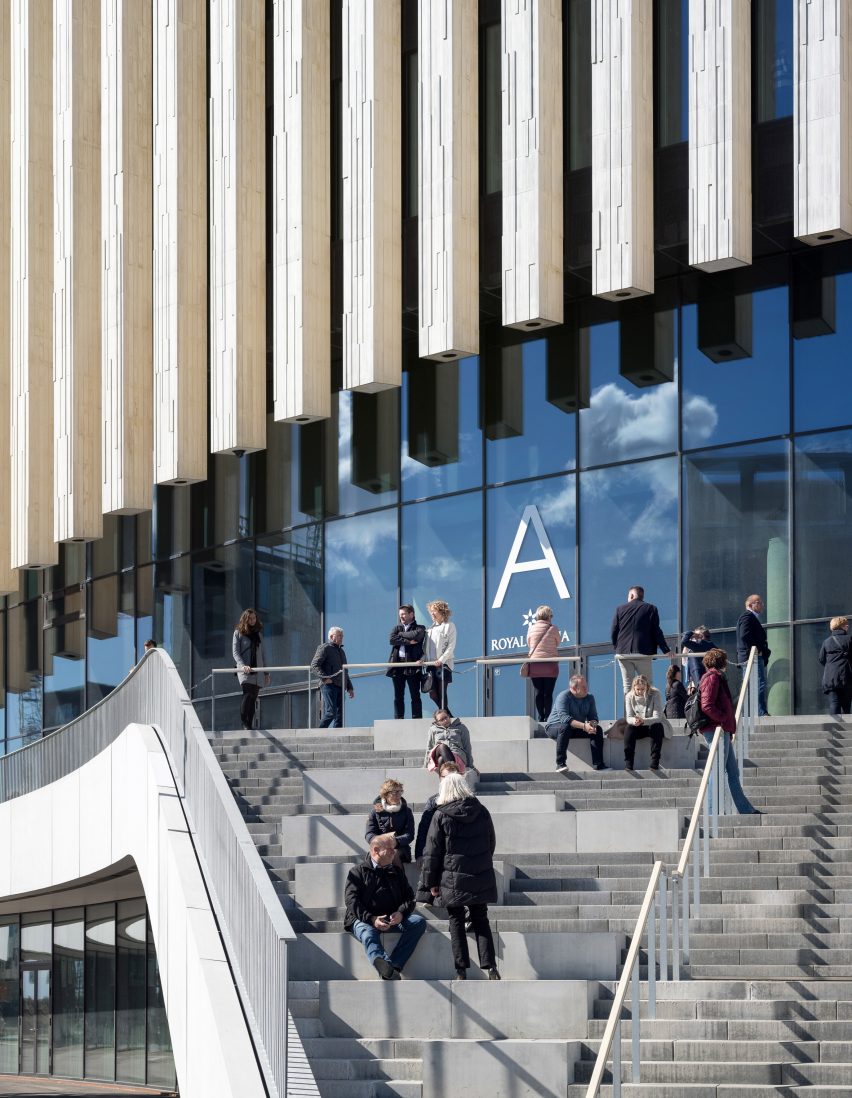
"Since the arena is a local building, it was important to us to design it as an aesthetic contribution to the area, and not just a massive concrete block like other stadiums tend to be," Herfort Nielsen added.
"Design-wise, Royal Arena is easy to recognise with the curvy wooden fins and the minimalistic Nordic expression and fits the nearby area."
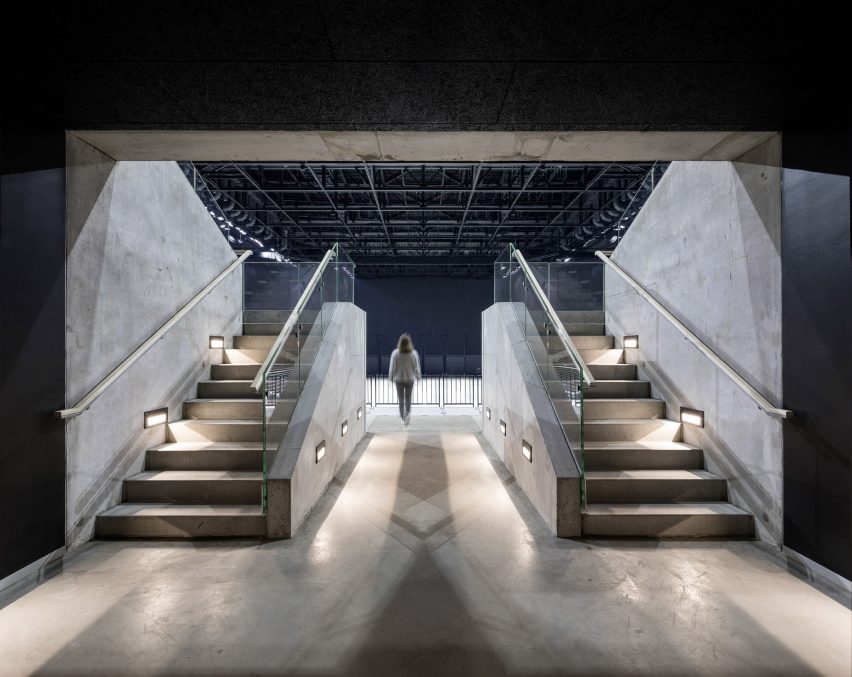
The large staircase leads visitors towards a main entrance set into the glazed surface that extends around the building. Concrete blocks positioned along either side of the stairs provide informal seating.
A total of four entrances distributed around the circumference of the building can be used to ease congestion when the arena hosts events attracting large audiences.
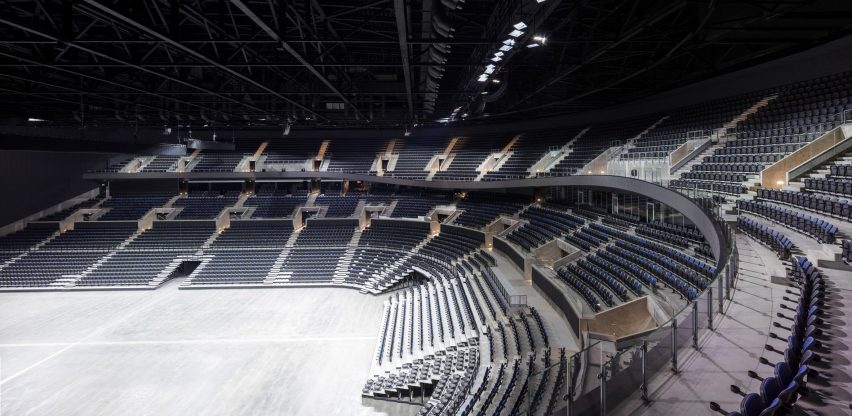
The undulating line formed by the lower edges of the external wooden cladding elements lifts up to signal the location of the various entry points.
A concourse that runs around the edge of the hall acts as the main circulation on each level, providing access to restaurants, bars, services and the stands.
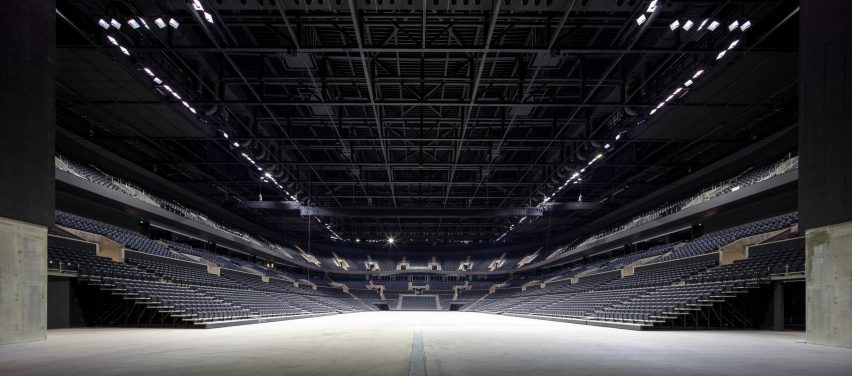
The arena itself is designed to be flexible so it can accommodate a range of staging options, which is aided by the 22-metre height around a stage positioned at one end.
Seats can be added, removed or sectioned off if required and the floor can be retracted to create a space suited to large concerts.
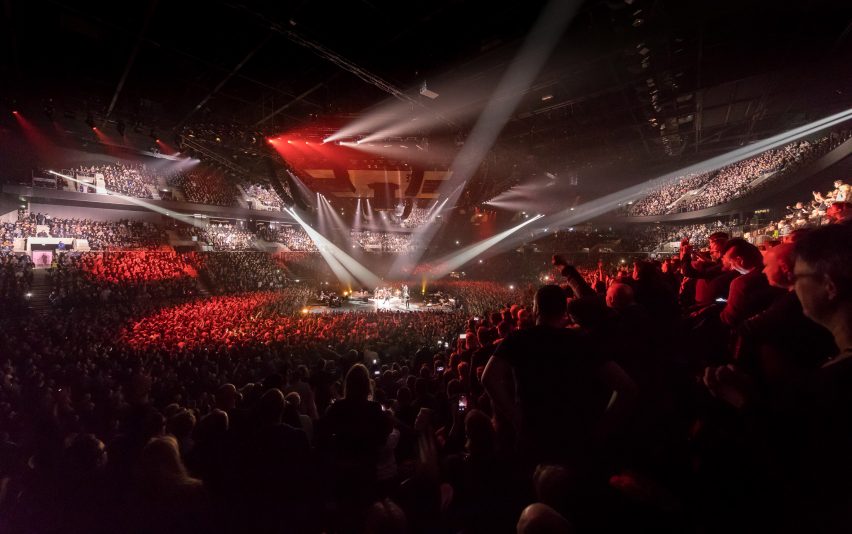
Most of the seating is arranged around three side of the stage but the fourth side can also be filled in with additional seats for events focused around a central stage, track or court. A temporary swimming pool will also be erected in place of the stage for an upcoming event.
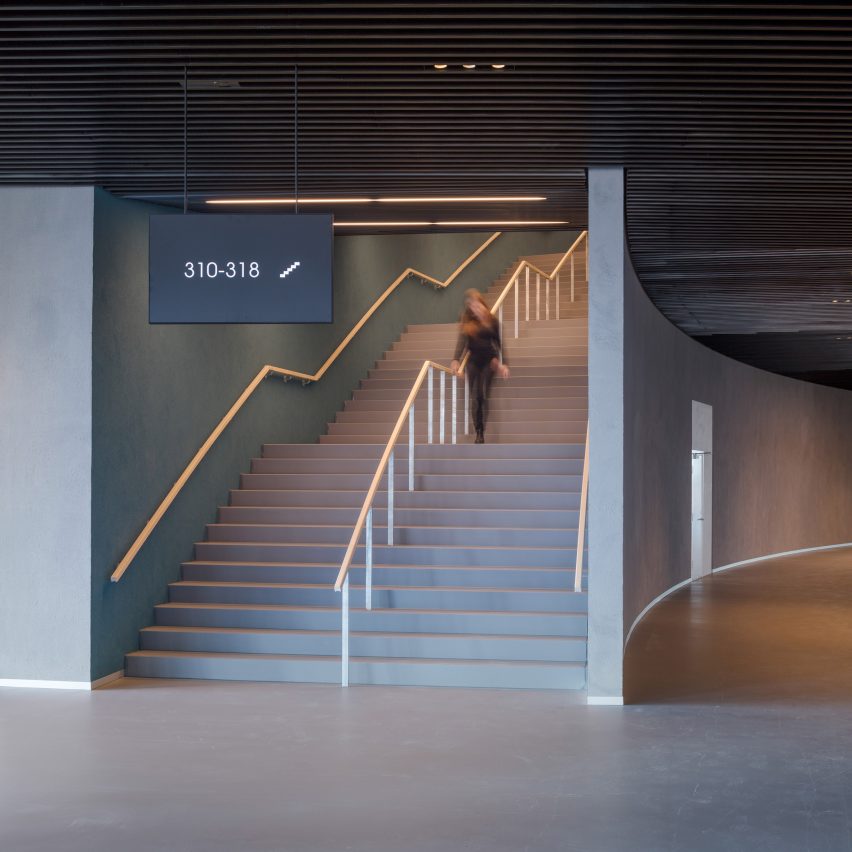
The arena featured on the shortlist for the sports building of the year at this year's World Architecture Festival, where it competed against projects including a swimming pool in Hong Kong with a roof shaped like a shell. The category was won by HKS with its design for the US Bank Stadium in Minneapolis, USA.
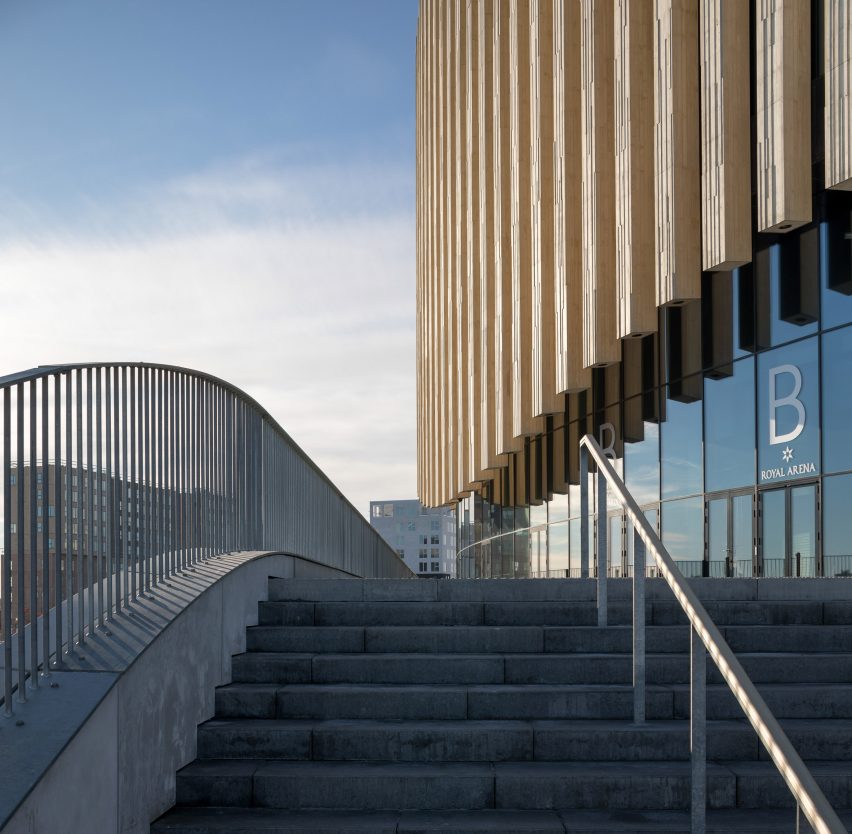
3XN is also working on an aquatics centre in southern Sweden with undulating timber and glass facades, and a new headquarters for the International Olympic Committee in Switzerland featuring a dynamic glazed exterior intended to evoke movement and flexibility.
Photography is by Adam Mørk.